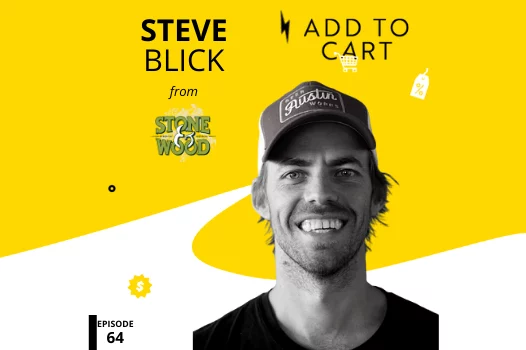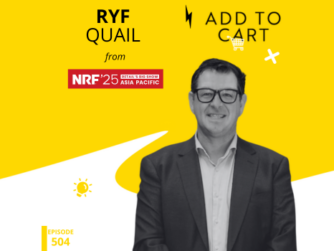In this episode of Add To Cart, we are joined by Steve Blick. In a past life, Steve was a school teacher, but now he educates grown ups about beer as the head of Direct to Drinker at Stone & Wood. In today’s chat Steve dives into the complexities of running a website off the back of two different platforms, how a subscription offering has changed how they interact with drinkers and how the majority of the Stone & Wood team own part of the brewery.
“It’s a bit like the check…beer knowledge is important for us, because it’s beer right? It’s not just a product on a shelf“
Steve Blick
Questions answered in this episode include…
- What are the unique challenges of selling beer online?
- How and why did you start a subscription element to the business?
- How does your employee share programme work?
Beer Club
We have these counter-culture beers and we do one every two or three months. There’s always a different beer. It’s always pretty exciting to see it released. There’s never huge quantities of it, so it does sell out.
The beer club started as a way for people to actually be guaranteed that they’re going to receive this beer. So, if they’re in the beer club, then we absolutely have their name on the list to make sure they get it. They don’t have to risk it running out at the local bottle shop. So they’re always going to be able to get it delivered, normally a week or two before anyone else gets it. And so they get to try that as part of the Beer Club, so that’s kinda where it started, but it’s become more than that.
It’s become a way for people to actually chat with each other about different beers they’re liking. It’s become a way for us to put on special events for beer club members. You know, if we want to release something else and we don’t have a lot of it, like a cool counter-culture t-shirt or a special perk that we’re offering. We can do that just with beer club members. So we get to connect with them all.
We get to get a bit of special treatment. They get to get those counter cultures. We kind of give a bit of insight gos on what’s happening at the brewery around hops or new types of malt all that beer nerdy stuff. So it’s, yeah, it’s some products, it’s some events and special treatment. It’s even some content. Those beer club members get a monthly newsletter and they are super engaged. Is it like an 80% open rate on those newsletters and they love hearing what we’re up to. And then tell us what they think of it too. Good. Bad. And in between.
Two platforms running side by side – WordPress and Shopify
When it comes to using just one platform for everything, it was an easier decision before we started bolting things on like Bold and everything else that comes with building an e-com business. We’ve always used WordPress. It does an awesome job with the content. We put a lot of great content out there. We’ve got guys in the business that are great at creating awesome content and we’ve got a team that’s familiar with WordPress and for us that that stood out as still the best choice as a content engine.
We didn’t want to lose that by pushing everything over to Shopify. On the flip side, Shopify for us was the best choice to grow an e-commerce side of the business and manage products and transactions and customers. And it’s just that easy back-end management that we wanted access to grow things without having to pull in developers. We couldn’t choose between either of them, so we went with both of them. That’s kind of how it ended up.
We always want to present a seamless experience at the front end and therein lies the challenge when you’re using two platforms. So, when we are pulling people in through the content and taking them through the checkout on the other side, WordPress and Shopify don’t always play nice. They both do things in different ways, so trying to get them to talk to each other, trying to keep the front-end looking the same when people jump between the shops, so they don’t feel lost or disorientated.
It’s the simple little things that seem simple, but have a big impact on customer experience. That’s the juggle and we are constantly aware of it and constantly looking at how we evolve it into the future.
Consistent omni-channel experience – the holy grail!
Consistent values across the team, that’s a huge part of it, because if we’re all thinking and feeling the same way about the experience we want to give our customers, then we’ve got a better chance of giving that rounded, consistent customer experience. But things like connecting the data between point of sale tills at the tasting rooms, with the online, with the beer club. Things like connecting through to people that come to our events, having that kind of one source of truth. I know it exists. I know some people do it really well. We’re not there yet, but we really conscious that that’s going to add value to people. So we’re working on it.
In a pure technical sense, I don’t think it’s totally solvable. Because it’s dynamic, things change and people want different things from you in different ways. Ultimately, most things come back to really good customer service and customer experiences. And if you can do that, then people will forgive you for all the little technical glitches along the way.




